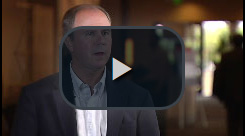July 16, 2014
Headlines
Energy
"Crumbling Roads in Oil Fields Slow U.S. Energy Boom"
Land/Buildings
"GSA Task Force Plans for Future Net-Zero Energy Buildings"
"Hospitals Build Hospitality Into Their Designs"
Water
"Inslee Proposes New Water-Quality Standards"
"Texas City Using Treated Wastewater for Drinking"
Transportation
"Bike-Share Planning in Cities With Varied Terrain"
"Many Roads, Bridges in Rural America in Disrepair"
"Sensors, Wireless Tech Help States Monitor Troubled Bridges"
"Study: Bike Lanes Save Money and Lives"
"U.S. Governors Warn That Road Repairs Stalled by Congress"
Legislation & Regulation
"House Republicans Propose $10 Billion Highway Fund Boost"
"Key Appeals Court Vacates EPA Gasification, Comparable Fuels Rules"
"Separate Companies, Joint Employers?"
"White House Ratchets Up Push For Highway Funding"
Other
"Outside Of New York, General Liability Premium Increases Stay Relatively Flat"
Energy
Crumbling Roads in Oil Fields Slow U.S. Energy Boom
Bloomberg (07/11/14) Murtaugh, Dan
With the United States projected to be energy self-sufficient by 2030, according to BP Plc, crumbling highways may threaten billions of dollars of investment in the country's oil belt. Because more wells are being drilled using hydraulic fracturing, there’s greater need for truckloads of water, sand and chemicals, as well as steel structures used in the process in fields often miles from major roads. “If you drive a cattle truck one or two times a year, you’re not affecting that road very much, but the first day you drive a 175,000-pound substructure of a drilling rig up that road you begin to destroy it,” Daryl Fowler, the county judge in DeWitt, Texas, said. “You’re looking at $2 billion of capital investment in our county alone that will be thwarted or curtailed completely if the road system is abandoned and they can’t get their product to market.”
Land/Buildings
GSA Task Force Plans for Future Net-Zero Energy Buildings
Federal News Radio (07/10/14) Wasko, Stephanie
The General Services Administration's Net- Zero Energy (NZE) Task Group has produced provisional definitions for net-zero energy buildings (NZEBs) which it will use to draft goals and guidance for building such structures. The NZE Task Group produced two definitions. First, it defines NZEBs as buildings that balance their actual annual source energy consumption with on-site renewable energy, and second, REC-NZEBs, which balance actual annual source energy consumption with a combination of on-site generation, off-site renewable energy, and Renewable Energy Credits from certified sources. The NZE Task force was established by the GSA last May as part of the Green Building Advisory Committee which seeks to push agencies to comply with a 2007 executive order directing agencies to "improve energy efficiency and reduce greenhouse gas emissions." The goal of the forthcoming NZEB guidance will be to promote building designs that reduce energy use by 50 percent or more over typical buildings. The group plans to meet of the next two months to develop the guidelines which it will present as a final draft letter to the GSA by the end of September.
Hospitals Build Hospitality Into Their Designs
Houston Chronicle (07/11/14) Hines, Lora
A growing number of hospitals around the country are putting more emphasis on patient and visitor satisfaction, particularly by getting feedback from stakeholders during the design process. The trend is being driven in part by the federal government, which began linking hospital payments in part to patient satisfaction in 2012. Some design changes have been safety related—for instance, a Texas hospital decided against bathrooms in neonatal intensive care rooms because parent advisers were concerned about infection risks. "It's a different model of care," said Anne Wright, the Texas Pavilion for Women's manager of perinatal education and conference center. "We've gone from provider-focused to family-focused."
Water
Inslee Proposes New Water-Quality Standards
Seattle Times (07/09/14) Mapes, Lynda V.
Washington Gov. Jay Inslee has proposed new state water-quality standards and an accompanying legislative package that would grant the state Department of Ecology new authority to prohibit toxic chemicals polluting state waters. Inslee aims to fight pollution at its source and ban toxic chemicals before they are discharged into the water. The draft rule is written by the state departments of Health and Ecology, and submitted for public comment and approval by EPA. Inslee says he would not submit a finalized water-quality rule for approval to EPA until the Legislature takes action because he plans to create an integrated approach to attacking water pollution. The proposed standards involve only two components of a complicated algorithm used to set state limits via administrative rule-making on about 90 chemicals regulated with state discharge permits. Up for amendment are two numeric inputs in the algorithm—the amount of fish it is assumed people consume, and the cancer risk that eating that much fish from state waters would theoretically create, assuming numerous other factors in the algorithm. The daily fish-consumption standard under the proposal would be raised from the current 6.5 grams per day of fish eaten to 175 grams. The proposed rule also would feature new flexibility for dischargers such as industry and municipal wastewater-treatment plants. Dischargers would be permitted to negotiate variances even if their discharge was too polluted, provided they were making progress toward lowering it. Variances would be determined case by case, with approval by EPA, including time limits and compliance schedules, backed by enforcement through fines.
Texas City Using Treated Wastewater for Drinking
Associated Press (07/09/14) Schmall, Emily
The Texas city of Wichita Falls is reusing treated wastewater as drinking water in order to cope with the drought that has gripped the state. Big Spring, Texas, has been using an indirect potable reuse program, and Brownwood, Texas, has approval to treat 1.5 million gallons of wastewater a day but has not yet started. Wichita Falls' program purifies wastewater to meet federal drinking standards and then sends it 12 miles away for additional purification. The city of 150,000 implemented a Stage 5 drought catastrophe and banned outdoor watering. Its reservoirs are expected to dry up by August 16 and have dropped from 90 percent capacity before the drought began in 2010 to about 20 percent in June.
Transportation
Bike-Share Planning in Cities With Varied Terrain
ITE Journal (07/14) Vol. 84, No. 7, P. 31 Wygonik, Erica J.; McCormack, Edward; Rowe, Daniel H.
A team of university researchers and transportation officials have developed a method for data-driven analysis of potential demand for bike sharing programs that incorporates U.S. Geological Society (USGS) topographic data. As bike share programs grow in popularity it will be necessary to have data-drive tools that can accurately estimate potential demand for bike-share programs and identify areas where they will most be of use. The researchers used a model used by the Delaware Valley Regional Planning Commission to analyze potential ridership for a ride share program in Philadelphia. The model took into account a variety of different data points from population and job density to proximity to parks, public transit, and bike-friendly streets. The researchers then adjusted the model to account for a slope indicator based on USGS digital elevation model (DEM) data. After experimenting with different methods, they determined that the best way to determine the slope indicator was to rasterize the DEM data and score it using a quantile method. The resultant slope indicator should then be double weighted for use in the model. Applied to Seattle, this technique yielded ridership estimates that comported with the knowledge of bikers familiar with the area and Phase 1 of the proposed Puget Sound Bike Share.
Many Roads, Bridges in Rural America in Disrepair
USA Today (07/10/14) Stoller, Gary
Rural roads and bridges across the country have fallen into disrepair, according to a report from TRIP. There are six states with 30 percent or more of their major rural roads with pavement in poor condition and at least 20 percent of rural bridges are structurally deficient in five states. Connecticut is in the worst shape with 35 percent of major roads in rural areas in poor condition, while Rhode Island and West Virginia tied at 33 percent. Nationally, 21 percent of pavement on rural and urban roads is in poor condition. The largest amount of structurally deficient bridges in rural areas are in Pennsylvania and Rhode Island, with 25 percent each.
Sensors, Wireless Tech Help States Monitor Troubled Bridges
Governing (07/14) Brown, Justine
Some states have keeping an eye on the structural integrity of their bridges through structural monitoring, which utilizes a combination of sensors, wireless communication, and cloud computing, in hopes of cutting down on infrastructure costs, enhancing safety, and reducing load postings and detours. Fixing the 25 percent of all state-owned bridges that are in need of repair would cost $140 billion. Technicians have traditionally used visual inspections, but the system is subjective and highly variable. Structural monitoring results in more objective, precise and timely data. Additionally, one company said that between 30 and 40 percent of the bridges it has assessed were in better condition than they had predicted from visual inspection.
Study: Bike Lanes Save Money and Lives
Al Jazeera America (07/11/14) Moskowitz, Peter
A new study that analyzes several different models of how bike infrastructure affects cities concludes that policies and projects supportive of bike lanes are worth the investment. The study, published in the journal Environmental Health Perspectives, argues that for every dollar spent on bike-related infrastructure, cities can receive anywhere from $6 to $24 in cost savings in the form of reductions to pollution and traffic congestion, as well as lowered healthcare costs from decreased traffic fatalities and increased exercise. The researchers used Auckland, New Zealand, as their model city and applied five theoretical interventions to its infrastructure to see how bikers and other commuters would be affected. They found that the larger the investment in bike infrastructure, the more people would be encouraged to commute by bike, and therefore the larger the return on investment would be. One of the most effective ways to increase bike traffic is to build separate bike lanes along major roads. The study found that these lanes could increase bike commuting by 20 percent by 2040. Separated bike lanes alongside car traffic also decrease injuries by 50 percent.
U.S. Governors Warn That Road Repairs Stalled by Congress
Bloomberg (07/14/14) Niquette, Mark
Republican and Democratic U.S. governors who recently convened for a National Governors Association meeting said that at the very least Congress should sanction a short-term fix before the federal highway fund loses solvency by the end of August, but they prefer a longer-term solution to eliminate uncertainty that could halt or delay projects worth an estimated $3.6 trillion to fix deteriorating roads and bridges. “These sort of half-solutions, kicking the can down the road, short-term sorts of things, this is not a way to inspire business confidence or consumer confidence,” notes Maryland Gov. Martin O’Malley. “Some of these investments are multiyear investments that require multiyear funding streams.” Spending by all tiers of government is expected to come up about $1.6 trillion short of the $3.6 trillion needed for infrastructure projects by 2020, says a 2013 report by the American Society of Civil Engineers. Congress is discussing bills to allocate about $11 billion through May 2015 for the Highway Trust Fund with talk of a long-term agreement later. U.S. Transportation Secretary Anthony Foxx says absent a congressional deal, federal payments to states for construction will slow beginning in August, putting tens of thousands of active projects and some 700,000 jobs at risk. Governors are concerned that partisan disagreement in Congress will adversely impact future funding for infrastructure. Some states are acting on their own while Congress continues to debate, with seven states having hiked or adjusted fuel taxes since February 2013, reports the Institute on Taxation and Economic Policy.
Legislation & Regulation
House Republicans Propose $10 Billion Highway Fund Boost
Bloomberg (07/09/14) Litvan, Laura
House Ways and Means Committee Chairman Dave Camp (R-Mich.) has introduced a proposal for a $10 billion increase to the U.S. Highway Trust Fund. Camp's proposal would offset costs by allowing employers to delay contributions to their employee pension plans. The plan would also raise customer user fees and transfer $1 billion from a federal leaking underground storage trust fund. The plan differs from one in the Senate, which could prevent progress on restoring the Highway Trust Fund as a deadline looms closer. The Senate plan was introduced by Senate Finance Committee Chairman Ron Wyden (D-Ore.) would be bi-partisan and is intended to resolve the issue swiftly. However, Republicans argue Wyden's plan is pursing revenue increases that would receive support in the House. Meanwhile, Senate Majority Leader Harry Reid wants a long-term solution, but admits that lawmakers are more interested in a short-term fix.
Key Appeals Court Vacates EPA Gasification, Comparable Fuels Rules
Superfund Report (07/07/14) Yohannan, Suzanne
In two separate rulings last month, the U.S. Court of Appeals for the District of Columbia vacated a pair of Environmental Protection Agency Rules excluding certain hazardous wastes from strict hazardous waste laws when used as fuel. The first ruling, in Sierra Club, et al v. EPA, vacated a 2008 EPA measure that excluded from regulation under the Resource Conservation & Recovery Act (RCRA) fuel produced through the gasification of hazardous waste. The exclusion applied to certain hazardous residuals of the petroleum refining process used to produce "synthesis gas" that is then burned for energy. The second ruling, in Natural Resources Defense Council, et al v. EPA, vacated the EPA's 1998 comparable fuels exclusion allowing fuel derived from hazardous waste to be burned in industrial boilers rather than RCRA-regulated incinerators. Both exclusions had ostensibly been based on RCRA mandates to increase recycling and reuse, but the court found in both cases that exclusions overstepped the EPA's authority and a clear congressional mandate to protect human health and the environment. The decisions leave the EPA the option to provide flexibility in regulating hazardous wastes under the RCRA, but disallow it from issuing blanket exemptions.
Separate Companies, Joint Employers?
Human Resources Executive Online (07/07/2014) Cueni-Cohen, Jill
The National Labor Relations Board (NLRB) announced it may change the National Labor Relations Act's rules on joint employer relationships. Legal experts say any changes would likely impact a large number of employers. Of particular importance to the issue is the case of the NLRB versus Browning-Ferris Industries of California Inc. That company had 17 supervisors on-site, a human resources office on-site and was involved in selecting and overseeing its employees. The U.S. Chamber of Commerce says the reforms are intended to make it easier for unions to organize workers by reducing the employer's ability to legally communicate to employees about union issues. The Chamber also argues a change would reduce employer leverage in deals with labor unions. Lawyers say moving ahead employers should be careful how they put together business arrangements. Employers should also take careful steps not to become involved in day-to-day human resources activities. Possible union activities should also be closely monitored by employers.
White House Ratchets Up Push For Highway Funding
Wall Street Journal (07/14/14) Paletta, Damian
The White House will attempt to galvanize support for a large-scale package to finance infrastructure programs, but the likelihood of congressional approval is low as lawmakers urge a stop-gap measure to avoid a funding lapse. On July 14, U.S. Transportation Secretary Anthony Foxx went to West Virginia to push for more spending on highway projects, and White House officials issued a report that will argue how infrastructure spending helps foster long-term economic growth. Part of the White House campaign will focus on a new executive action to reportedly boost private-sector spending on infrastructure projects. Earlier this year the Obama administration called for an retooling of the tax code that would generate more than $300 billion in new revenue that the White House wanted to funnel into infrastructure projects, but that proposal did not get any congressional momentum, and the White House has been forced to defer to lawmakers on piecemeal measures to tackle these projects. Foxx has warned that if Congress fails to pass legislation soon to address the Highway Trust Fund, then he will have to postpone and slash payments to states starting in August. This is due to the fact that the government spends a lot more money on highway projects than it collects through gas and diesel taxes, and if Congress does not divert more money, then the projects can be delayed. In the hope of upping the pressure on Congress to act, the White House published "an interactive transportation map" that it says will let Americans see the conditions of roads and bridges in their area, and ask citizens to submit photos and descriptions of local roads, bridges, and traffic problems to a White House database.
Other
Outside Of New York, General Liability Premium Increases Stay Relatively Flat
Business Insurance (07/06/14) Kenealy, Bill
With the exception of New York, prices for general liability insurance renewing at mid-year have ranged from staying flat to increasing by 5 percent. "The year is playing out much as we expected. There’s been a tapering of rate increases," says Douglas J. O'Brien, casualty and alternative risk national practice leader at Wells Fargo Insurance Services USA Inc. "For general liability in general, we’re seeing flat renewals to an increase of a couple of percentage points. For lead umbrella policies, it’s been flat to 5 percent, but in a few cases, we've seen a reduction due to competition." Jack Green, managing principle at Integro Ltd., says overall the market has remained relatively stable, with higher rates being limited to sectors with a greater perceived risk, such as energy and chemical companies. One area that could see higher rates is construction liability coverage in New York City, according to O'Brien.
© Copyright 2014 INFORMATION, INC.
GET INVOLVED
EDUCATION
Click the video above to learn why ACEC Business Education will help your firm thrive.
NEW RESOURCE
Capture Planning for the Win
Capture Planning for the Win is a step-by-step, scalable capture and pursuit management guide that will help you evaluate and improve your firm’s business development capabilities.Details
2023 Bundle of Salary Surveys of Engineering Firms (Zweig Group)
The Zweig Group 2023 Engineering Firm Salary Surveys are the most up-to-date and comprehensive compensation survey report for engineering firms operating in each region of the U.S. Details
TRUSTS
Insurance and Retirement Trusts
ACEC's Trust Programs are designed to enhance your membership investment by helping to control your firm's costs. More Info


.jpg)




.png)




.png)





